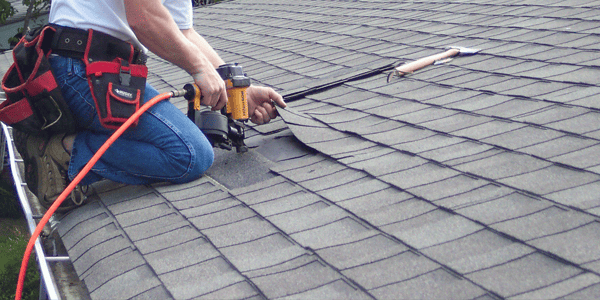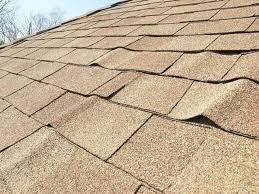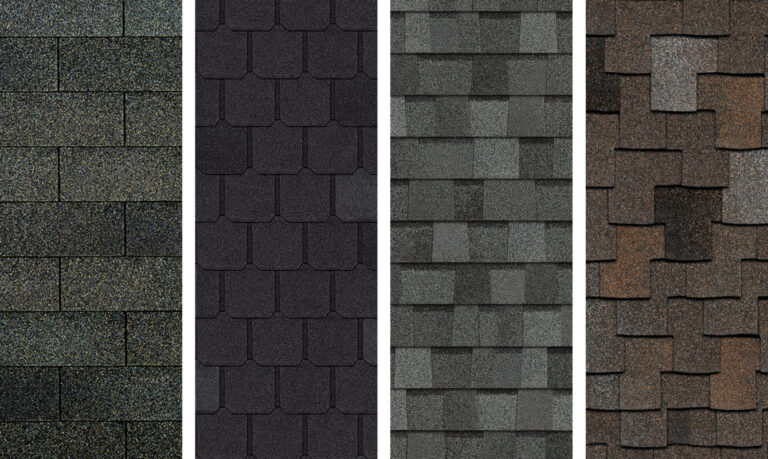Unfortunately, if you don’t know your roof’s age, you can’t just take a wild guess. If you guess too low, you could be dealing with expensive leaks and water damage soon. But if you guess too high, you might end up replacing your roof before it was necessary.
If you’ve recently moved into a new home and are wondering, “how old is my roof?” then you’re in the right spot. We’ll share 5 tips to help you narrow down the age of your roof.
How Old Is My Roof? 5 Ways To Determine The Age
1) Look for Signs of Damage
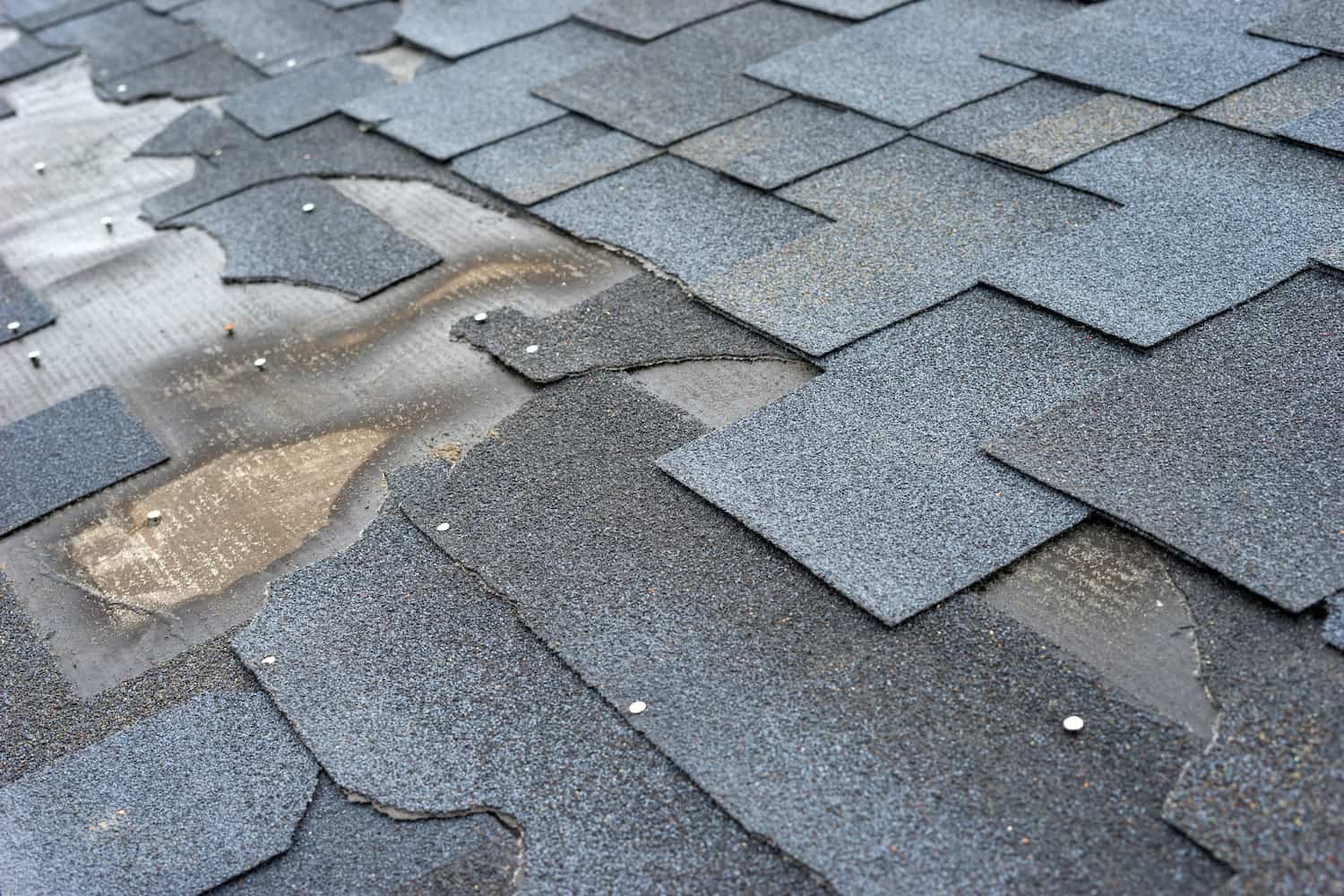
The first method you can try if you don’t know your roof’s age is to take a peek at your roof yourself. If you feel comfortable and have a buddy to help, you can climb up a ladder and glance at your roof’s condition.
There are common signs of roof damage that indicate your roof is reaching the end of its lifespan. Some of these damages may appear after a storm, but if there hasn’t been recent inclement weather, a damaged roof may just be aging. (Keep in mind that most asphalt shingle roofs have an anticipated lifespan of 15-25 years.)
Signs of an aging roof include:
- Damaged or missing shingles
- Curling shingles
- Rusted flashing or gutters
- Moss or algae growth (This can appear as fuzzy green growths or black streaks)
- Rusted or exposed nails
- Pooling water
- Significant granule loss
- Poor ventilation
If you notice any combination of these signs of damage, you may be dealing with a roof that’s at the end of its lifespan (20+ years old).
2) Ask the Previous Homeowners
After you close your home sale, you can still reach out to the previous owners with questions about the home’s condition. However, you should only reach out to them if it’s shortly after you’ve moved in. (For example, a month or two after move-in is probably just fine. But if it’s a couple of years after you bought the house, then you probably shouldn’t bother the previous owners.)
- The best way to communicate with previous homeowners is to go through your real estate agent.
- They will act as a third-party communicator so that the interaction is more professional and doesn’t come across as invasive.
Hopefully, the previous owners were the ones who replaced the roof and can fill you in on the year it was replaced. However, it’s possible that they didn’t replace the roof— but even that can be a clue. If the previous owners didn’t replace the roof, then you know the roof is at least as old as the amount of time they lived in the residence.

3) Call the Roofing Company Who Performed the Roof Replacement
It’s possible that the previous homeowners might not remember when they had the roof replaced, but they may remember the name of the company that completed the project. If this is the case, you can call the roofing company and explain your situation.
As long as they used a legitimate roofing company and not a local friend/handyman, the company should have records of all the work they’ve completed. They can find a receipt of the roof replacement on your home and share the replacement date with you.
4) Request a Copy of the Building Permit
Many counties or municipalities require building permits for roof installations. If other methods haven’t proved fruitful, you can reach out to your local government’s office and request a copy of the building permit. The permit should note the exact date the roof was installed, so it’s definitely a very accurate source if you can get your hands on it.
Some counties don’t require a building permit, but it doesn’t hurt to call and ask.
5) Get a Professional Roofing Inspection
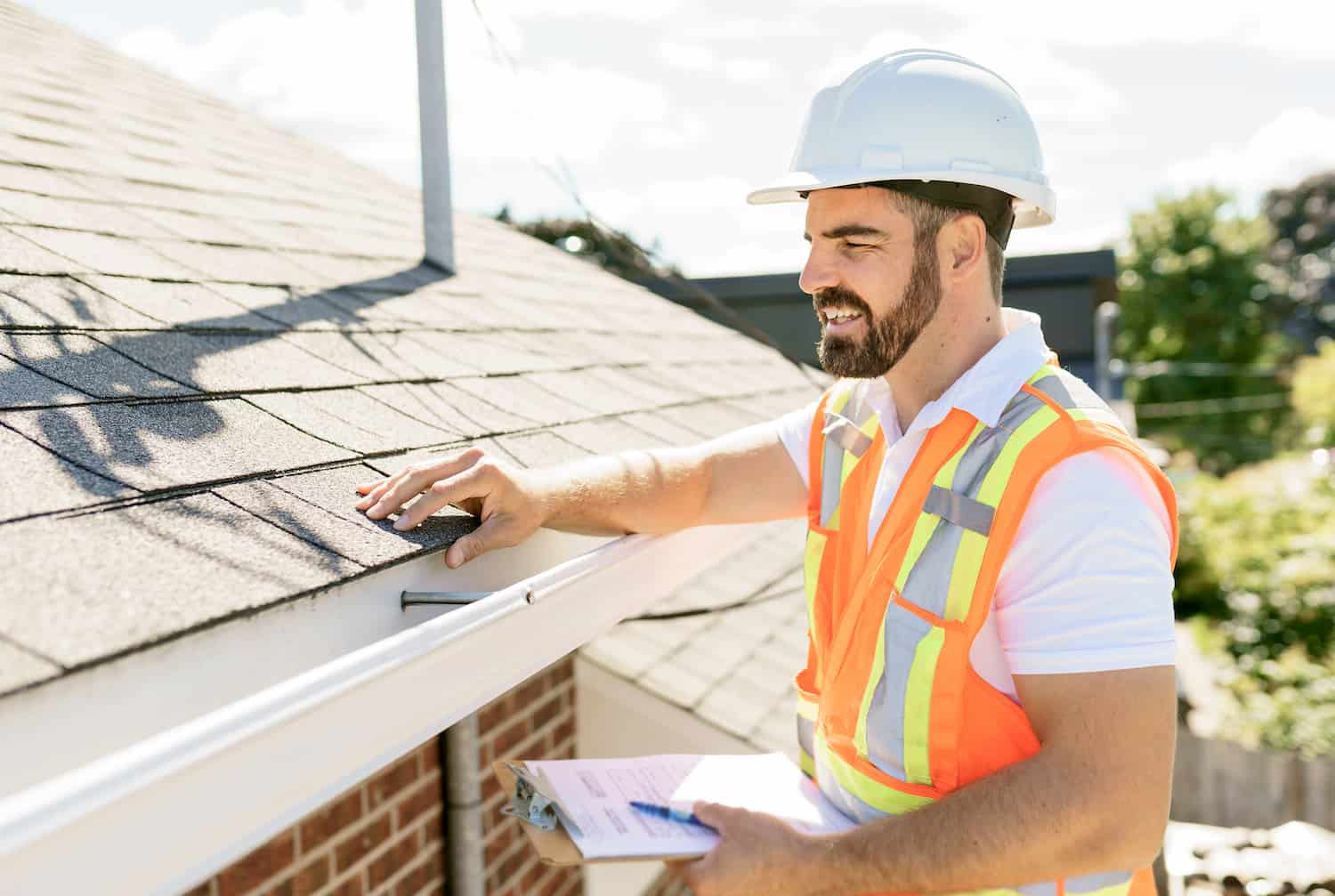
Lastly, if you aren’t able to get the exact date of the roof installation from one of the previous methods, your best bet is to set up a professional roof inspection with a local roofing contractor.
A skilled roofing professional will have the knowledge and experience to estimate the age of your roof. They know exactly what to look for when a roof has reached the end of its lifespan.
At the very least, a trustworthy contractor will be able to let you know if you should get a roof replacement soon or if you have a few more years before that’s necessary. As a bonus, most reliable roofers offer free inspections and estimates, so this service could come at no cost to you.
Another benefit of scheduling a professional roof inspection is that the roofing contractor will be able to recommend any necessary repairs to keep your roof in top condition if it still has some life left.
6) Check the Attic for Any Indications
One overlooked method to determine the age of your roof is to inspect your attic. The attic can show signs of wear and tear that aren’t immediately noticeable on the roof’s surface. Head up there with a flashlight and look for:
- Sagging boards or rafters
- Sunlight peeking through (indicating holes)
- Dark stains or streaks (indicative of water leaks)
- Insulation that is damp or not well-settled
Besides these signs, you may also find any documentation, labels, or warranty cards left behind by the previous roofing company, indicating the type of shingles used or when the installation occurred.
7) Examine Roofing Warranty Documents
When you moved into your house, you might have received a bunch of documentation, especially if it’s a relatively new build. Among those documents, there might be a warranty for your roof. While most homeowners remember to keep appliance warranties, many forget about roof warranties.
Warranties typically indicate when the roof was installed and the expected lifespan of the materials used. If your roof has a 25-year warranty and the warranty documentation dates back 10 years, you have a rough idea of your roof’s age. If you can’t find the warranty, you might be able to call the manufacturer with the type or model of the shingle (if you know it) and get more details.
Remember: Age Isn’t Always Everything! Even if you find out the exact age of your roof, remember that how well it has been maintained plays a significant role in its current condition. A 15-year-old roof that has been neglected might be in worse shape than a 20-year-old roof that has been properly cared for. Regular check-ups and timely repairs are crucial for extending your roof’s lifespan.
Trust Tidds for a Free Roof Inspection!
We hope these 5 tips help you narrow down your roof’s age. Whether you know your roof is at the end of its lifespan or if you need a professional roofer to assess the age, you can count on Tidds Roofing in North Carolina.
We offer free, honest inspections and provide industry-leading roof repairs and replacements that keep your home protected for years to come. With hundreds of 5-star reviews, you can trust our friendly team to get the job done right.
Reach out today for a free inspection!
